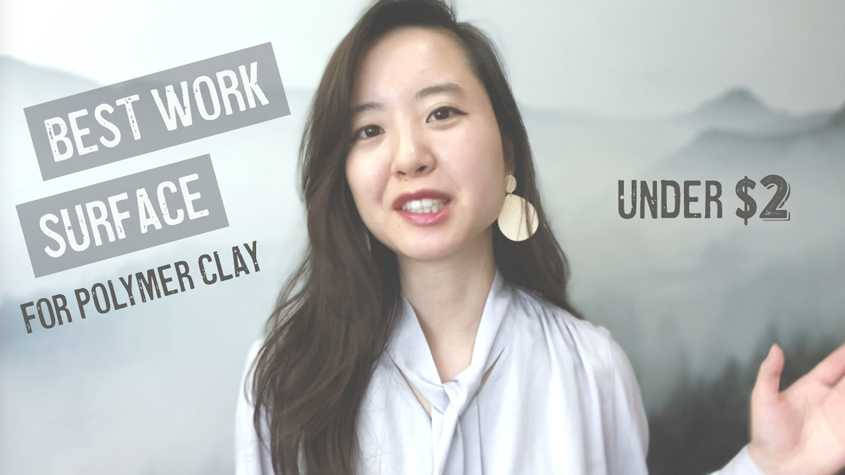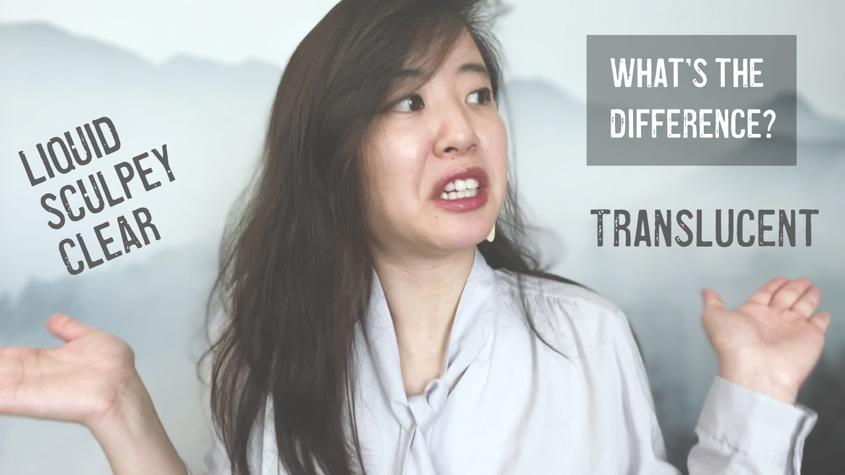A guide helping you decide which liquid clay is right for your project.
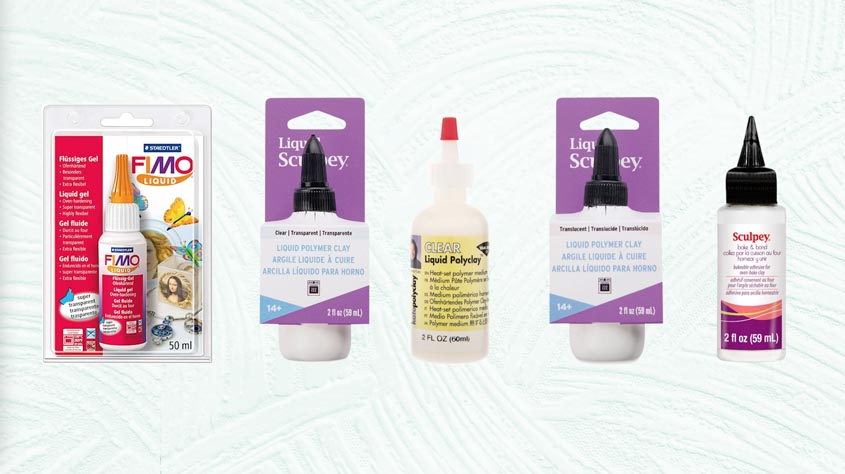
In this guide, I compare and contrast all the common liquid clays by describing their differences in order to help inform which is the right one for your project. You can also learn more about liquid clay in general such as their uses and where to buy it, by clicking this link.
You may continue reading, but if you’re like me who prefers to listen and see, you can watch in video format:
These ratings below are based on a system I put together to make it easy to compare the differences in relation to the clays featured in this guide.
Before you compare the liquid clays, it is helpful to consider the following points:
- Learn the difference between translucent or clear liquid clay:
One of the first place to start, is to determine if you want a translucent or clear liquid clay. Translucent liquid clay is great is you want to create multi-layered effects because it’s semi-transparent, while clear liquid clay is great if you want to create a glass-like appearance where you can see details through it because it’s almost 100% transparent. - Determine what you are using the liquid clay for:
Next, is determining what you are using the liquid clay for. And if you haven’t already watched my “what is liquid clay used for” video, I would highly recommend watching that because it goes over the potential possibilities for what you can do with liquid clay.
Do you want something multi-purpose for maybe conditioning crumbly clay and as an art medium, or do primarily want to use it as an adhesive that cures with a strong bond that is reliable across most clay brands? The varying degree of thickness, clarity, flexibility will determine which liquid clay is best for the job and i’ve listed out all traits to make it easy for you guys to compare all the common liquid clay brands. So keep reading on!
Liquid Clay Brands
Below is a list of liquid clays and their attributes.
- Tint is the undertone
- Clarity is how clearly you can see through the cured clay.
- Viscosity is the level of thickness. If it’s rated low it means it’s not very thick and is quite runny.
- Flexibility is how bendable the clay is when cured. How far can you bend it without snapping?
- Bond Strength is how strongly it bonds pieces of clay together. A high bond rating means that, when cured, the clay pieces will bond well and would be very difficult if not impossible, to pull part.
Fimo Liquid (Fimo Liquid Deco Gel)
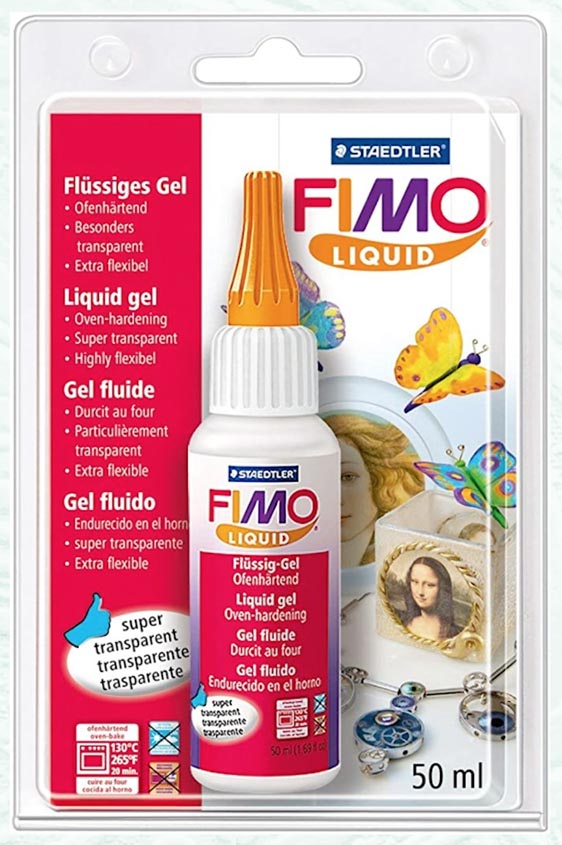
- Tint: white, if any
- Clarity: (4.75/5) ***Probably the clearest clay when baked at 265ºF, but is 2nd to Sculpey clear when baked at 300. It can also have visible grainy particles.
- Viscosity: (1/5)
- Flexibility: (5/5)
- Bond Strength: (4.5/5) ***While it cures with a strong bond, it might be trickier to use because it’s not as thick. Thicker clays may be easier to work with by preventing clay pieces from slipping around as you are constructing, but when it does bond, the bond itself is one of the strongest out of all liquid clays.
- Finish: matte/satin ***Extremely thin layers will provide a matte finish, and thicker layers create a satiny gloss finish.
- Usage: Strong adhesive to bond clay pieces across all clay brands. However, it’s not very thick which just means your clay pieces might slip around as you are constructing your piece. It can also be used as an art medium depending on required attributes (so if you need something that’s very clear for your craft project, this is a great choice) as well as using it as a conditioner for crumbly clay.
- Details:
- It is highly flexible after baking.
- Works well across the majority of clay brands in creating a strong bond for combining clay pieces.
- While it cures with a strong bond, it might be trickier to use because it’s not as thick which is why it’s at a 4.5 rating instead of 5. You’ll find that thicker clays might be easier to work with in terms of preventing clay pieces from slipping around as you are constructing your piece.
Clear Liquid Sculpey
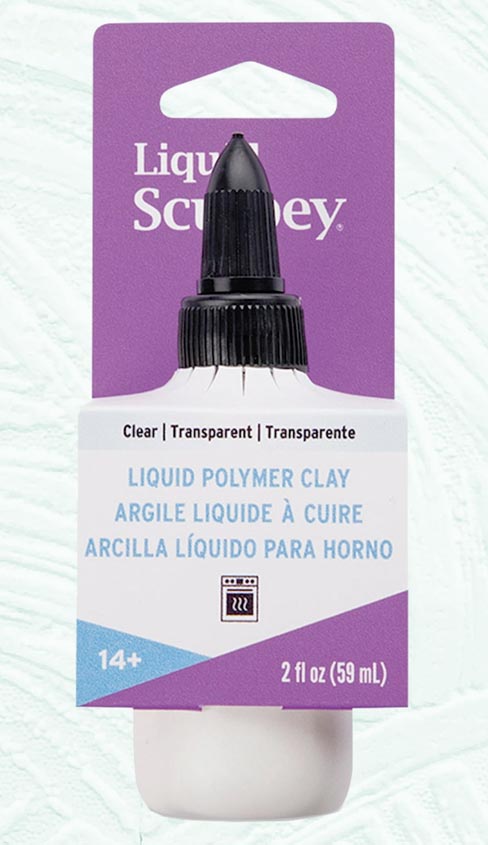
- Tint: white, if any
- Clarity: (4.75/5) ***It’s one of the clearest liquid clays available and gets even clearer when followed by a heat gun after baking at 265 degrees.
- Viscosity: (1/5)
- Flexibility: (5/5)
- Bond Strength: (3/5) ***The bond strength is average like most liquid clays with Fimo being the exception.
- Finish: satin/glossy ***it’s glossy when cured with a heat gun
- Usage: It can be used as an Art medium depending on required attributes and as a conditioner for crumbly clay. So if you need something that cures very clear and can double up as a clay conditioner, this is a good choice. It also tends to be a bit cheaper and readily available in craft stores than Fimo.
- Details:
- make sure to stir if before every use since the ingredients settle quickly.
Kato Liquid Polyclay
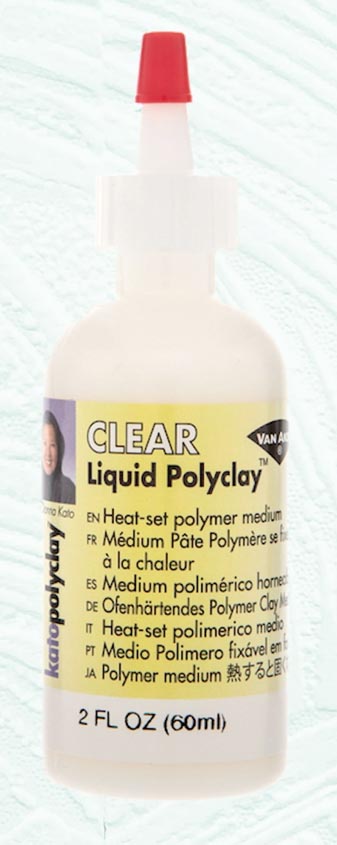
- Tint: slight yellowish
- Clarity: 4/5) ***This one is less clear than the 2 previously mentioned liquid clays.
- Viscosity: (3/5) ***It’s also thicker than the 2 previously mentioned liquid clays.
- Flexibility: (5/5)
- Bond Strength: (3/5) ***The bond strength itself is also average, but the medium thickness may give it some advantage in the construction process b/c it’s not as slippery. The thicker the clay, the less runny and slippery it is.
- Finish: satin/gloss ***glossy when cured with a heat gun. It cures even glossier than Clear Liquid Sculpey.
- Usage: Good as adhesive or conditioner and an art medium depending on required attributes.
Translucent Liquid Sculpey (TLS)
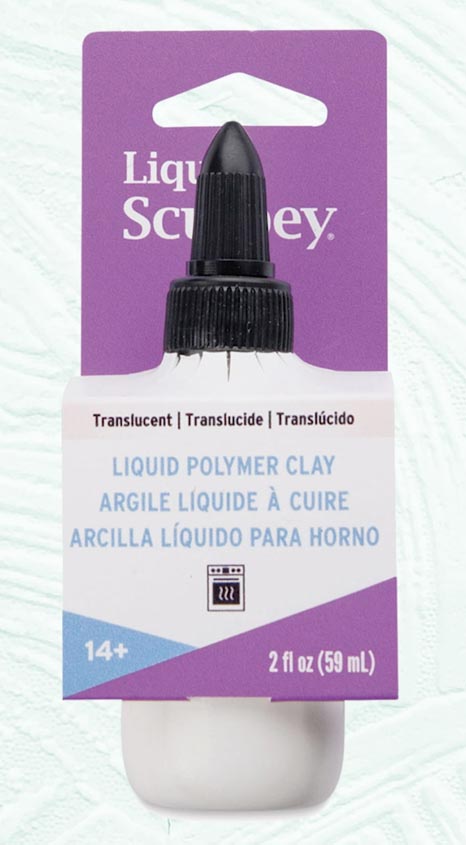
- Tint: slight yellowish
- Clarity: (2/5) ***It’s cloudy when cured.
- Viscosity: (4/5) ***One of the thickest of all liquid clays with a syrupy consistency, but not as thick as Sculpey Bake and Bond. (if you need to thin it, you can add a small amount of “Sculpey Diluent which also Clay Softener”).
- Flexibility: (1/5) ***Cures hard and firm
- Bond Strength: (3/5) ***So it’s pretty average as far as bond strength
- Finish: matte
- Usage: It’s great as an Art medium for producing multi-layered effects and as a conditioner for crumbly clay.
Sculpey Bake and Bond
So let’s talk about Sculpey Bake and Bond for a minute, while it’s not labeled as liquid clay, it is actually just a thicker version of liquid clay. It is however, best used as an adhesive to bond things to clay because of its thickness and stickiness.
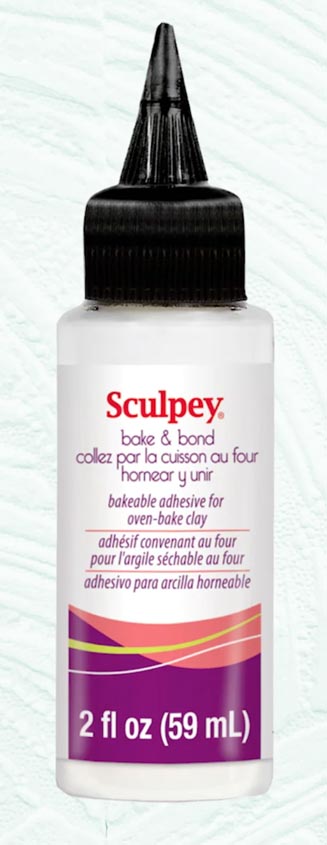
- Clarity: 2/5 ***It’s cloudy when cured. It will be visibly seen, so it’s best to use moderate amounts when securing pieces together with it, and apply inconspicuously.
- Viscosity: (5/5)
- Bond Strength: (3.5/5) ***While it doesn’t bond more strongly than any of the other liquid clays. The advantage of using this as an adhesive is that its extra thickness, prevents it from dripping and the stickiness prevents parts from slipping around while trying to attach parts together.
- Usage: it’s meant to be used as bakeable adhesive to attach clay or other media to clay pieces like metal ***Remember that liquid clay doesn’t work like glue, you have to bake it to cure the bond.
- Not Good For: conditioning clay or using at an art medium ***It’s not good for conditioning solid clay because of it’s thickness and stickiness.
- Details:While it doesn’t bond more strongly than any of the other liquid clays. The advantage of using this is that it’s easier to use as an adhesive, because of its extra thickness, stickiness and the fact that it doesn’t drip like other liquid clays. This allows for pieces of clay or even other mixed media like metal, to stay put and being less likely to slip around when being attached to clay piece.
Recommendations:
- Always stir your liquid clays to ensure the material are mixed well.
- Using a heat gun (accidentally said glue gun in video) will help liquid clay become more clear, except in the case of Translucent Liquid Sculpey.
- You can add drops of clay softener to liquid clay for added flexibility and strength.
Use liquid clay as a bonding agent:
- The liquid clay brand I recommend as a bonding agent for clays is Fimo Liquid.
- Generally Fimo Liquid works best to bond clay pieces together across most brands of clay wether it’s raw to raw, baked to baked, or raw to baked.
- Generally Fimo Liquid works best to bond clay pieces together across most brands of clay wether it’s raw to raw, baked to baked, or raw to baked.
- Some other technical things to keep in mind:
- Raw to raw adhesion is strongest when you use a bonding agent even though some clay brands like Cernit or Fimo Professional may work fine without it.
- If you’re doing baked to baked and find that just using liquid clay isn’t enough, you can create a raw bridge (which is essentially a connector piece out of clay) when applying the liquid clay to connect them together.
Did you find this helpful? Get notified of new content releases:
Sign up for News or Notifications

